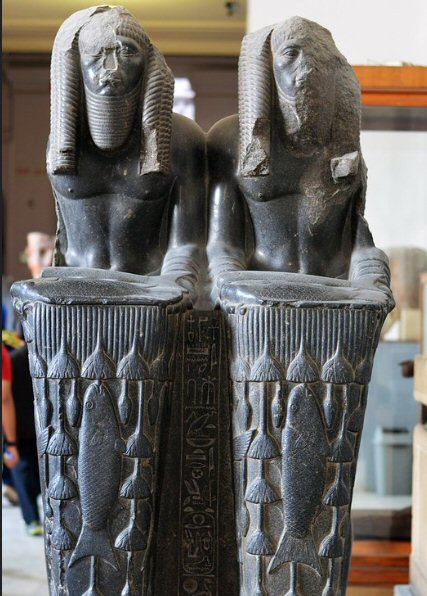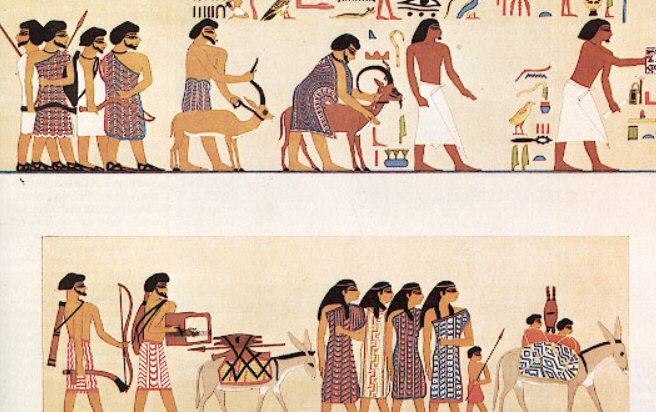

Hyksos' control over Northern Egypt evolved in a number of stages. Starting from Avaris they gradually moved towards Memphis, following the eastern edge of the Delta. They established centers at Farasha, Tell El-Sahaba, Bubastis, Inshas and Tell El-Yahudiya (about 20 km north of Heliopolis). This progression took place over a period of almost half a century until about 1675 BC. By then, the 33rd or 34th king of the Thirteenth Dynasty, Dedumesiu I, ascended to the throne. If this king is the one of Manetho Tutimaius, then it would have been during his reign that the Hyksos became rulers of Egypt.
After 1633 BC, the Thirteenth Dynasty disappeared altogether from the written records. The founder of the first Hyksos Dynasty, Manetho's Fifteenth Dynasty, was a man called Salitis. Probably, Salitis is also to be identified with a ruler called Sharek whose name appears at monuments dating to this time in Memphis. 'Hyksos' is the Greek form of their ancient name 'hk3-h3swt' (which means the rulers of the foreign lands).
This name gives no indication of race or any clearly definite homeland: it was a term applied to all foreigners in Nubia and Syria-Palestine during the Old and Middle Kingdoms. The final stage of the Hyksos' rise to power might have been violent, but their gradual infiltration seems to have been much widely accepted by the Egyptian population.
The Hyksos kings themselves were great builders and artisans, leaving behind them temples, statues, reliefs, and scarabs, as well as encouraging the continued dissemination of Egyptian literature. The Hyksos introduced a method of government which was to prove equally successful with all the later invaders who applied it in Egypt: instead of attempting to impose their own governmental structures on the country, they absorbed themselves in the existing Egyptian political system.

This did not prevent them from expressing their own cultural identity, but they transcribed their names in the hieroglyphic system of writing, adopted the traditional royal tutelary, and copied Middle Kingdom sculptural styles. In the sphere of religion, they instituted an official Egyptian style cult based on Seth of Avaris, with the introduction of more Semitic features into his iconography. It was at this time that Seth was assimilated with Baal-Reshef and with the Hittite god, Teshub. The Hyksos also continued to worship the Syro-Palestinian goddess, Anta-Astarte, but they showed no signs of neglecting the traditional Egyptian gods, and kings continued to hold the title 'Son of Re'. The Innovations of the Hyksos Period were innumerable, particularly in the field of warfare, which was revolutionized by the introduction of chariots. The Egyptians were also introduced to innovative items of armor created with new techniques of bronze-working, which would eventually allow the New Kingdom pharaohs to expand eastwards. For 20 years, Salitis, probably based at Memphis, ruled a kingdom comprising both the Delta and the Nile Valley down to Gebelein, as well as the desert trade routes that allowed the Hyksos to make contact with the Nubians. This state of affairs lasted until the reign of Apophis I.
